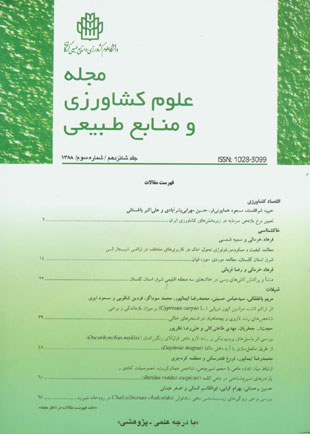Rough rice (Binam) kernel moisture simulation during drying with finite element method
Author(s):
Abstract:
Artificial drying of rough rice products is one of the most common methods of its preservation. Rapid drying can increase brittleness and induce internal cracks which predispose the product to breakage during subsequent activities. The drying process must be understood and product to breakage during subsequent activities. The drying process must be understood and controlled so that design guidelines which reduce or minimize drying damage to rough rice can be established and improved. This requires an accurate description of the drying mechanism. A finite element formulation and solution of a set of linear and nonlinear coupled conductive heat and diffusive moisture transfer equations to improve grain drying simulation of ax symmetric bodies is presented. Ax symmetric linear triangular elements with two degrees of freedom per node are used to decretive the rice grain in both models. One medium grain, "Binam", was used. During the thin layer drying, moisture was measured every minute. Good agreement has been observed when the output of nonlinear model was compared to experimental data obtained by others. Relative deviance average that calculated of linear and nonlinear model with experimental data, respectively 10.5% and 3.5%. This result shows that nonlinear is near experimental data. Nonlinear model is used for moisture simulation of rough rice drying. The simulated moisture profile and gradient are directly usable for stress cracking analyses of rough rice. The results of the finite element analysis can be used for rough rice quality evaluation and drying simulation studies.
Language:
Persian
Published:
Journal of Agricultural Sciences and Natural Resources, Volume:11 Issue: 2, 2004
Page:
43
https://www.magiran.com/p222939


